Leatherleaf mahonia
The good news about leatherleaf mahonia, no matter where you’re reading this, is that this plant is well adapted to almost any part of Texas. As long as it has shade from the afternoon sun in the summer, this plant just wants a chance to perform.
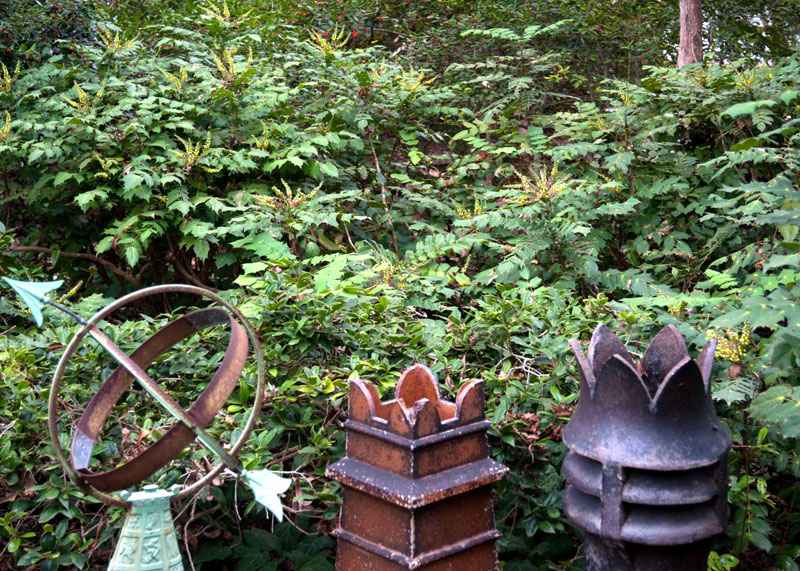
It’s a cousin to nandinas, barberries, and native beauty of Southwest Texas, the prickly agarita. Like many of its relatives, it showcases its dramatic stems. Its bold leaves are borne off rarely branching stalks that grow to be 4 to 6 ft. tall.
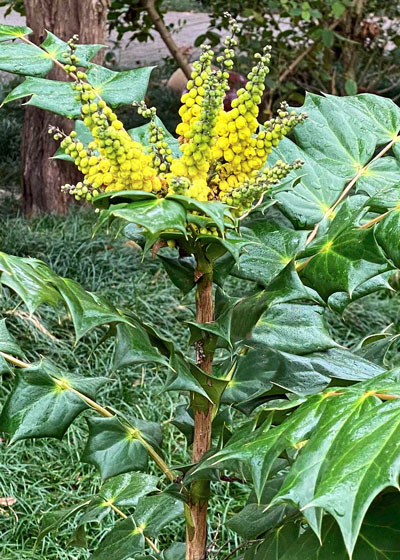
And, yes, the flower clusters are very showy when they’re produced in mid- to late winter each year. They’re a treat for the honeybees, since nothing else is blooming this early.
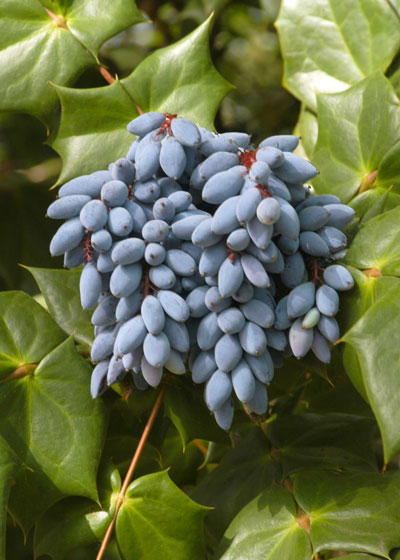
And the bees do their jobs, because the flowers are soon followed by showy clusters of blue-green fruit that ripen in spring. Many years the fruit are ready by the time ravenous cedar waxwings migrate through town, and then, two hours later, no more fruit on the mahonias.
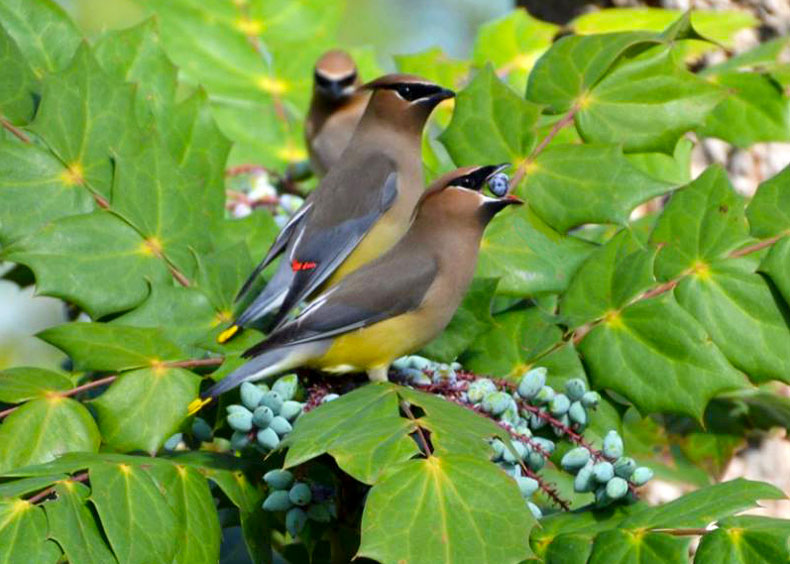
From that point on through the rest of the growing season they’re standing like proud sentinels toward the backs of my shade beds, behind the dwarf hollies, alongside the Oakleaf hydrangeas and in front of several Japanese maples. Just as they’ve been for 40 years or longer.
What you need to know…
Common name: Leatherleaf mahonia
Scientific name: Mahonia bealei (some put it in the genus Berberis)
Native home: Central and Southern China
Hardiness Zones: 7-9 (all of Texas except the northern Panhandle)
Mature size: 4-6 ft. tall, 3-5 ft. wide
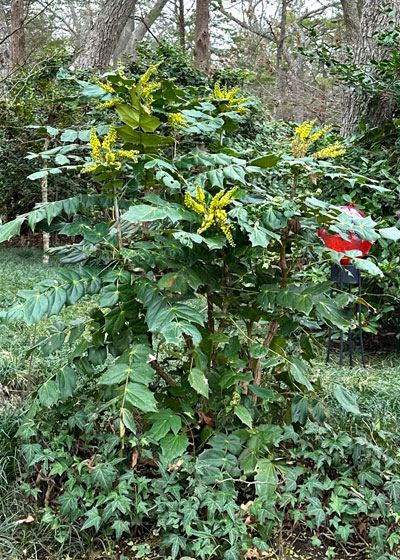
Sun/Shade: Tolerates morning sun, but must have afternoon shade.
Soil: Tolerates most soils, but does best in loams that are slightly acidic.
Flowers: Bright golden yellow, mid- to late winter
Fruit: Clusters of blue-gray berries in spring
Foliage: Very large, evergreen leaves, very fibrous and prickly. Blue-green and borne alternately along large stems.
Assets: Deer-resistant, also holds up well to drought and salt
Note: North Carolina State University lists this plant as being invasive in the Southeastern United States. Technically I’m sure that is true since birds do favor its fruit, however, I can count on one hand the number of seedlings that have shown up in my gardens in the 40-plus years that I’ve been growing it. I’d rather have it in my landscape than two of our native plants: hackberries or cottonwoods.
